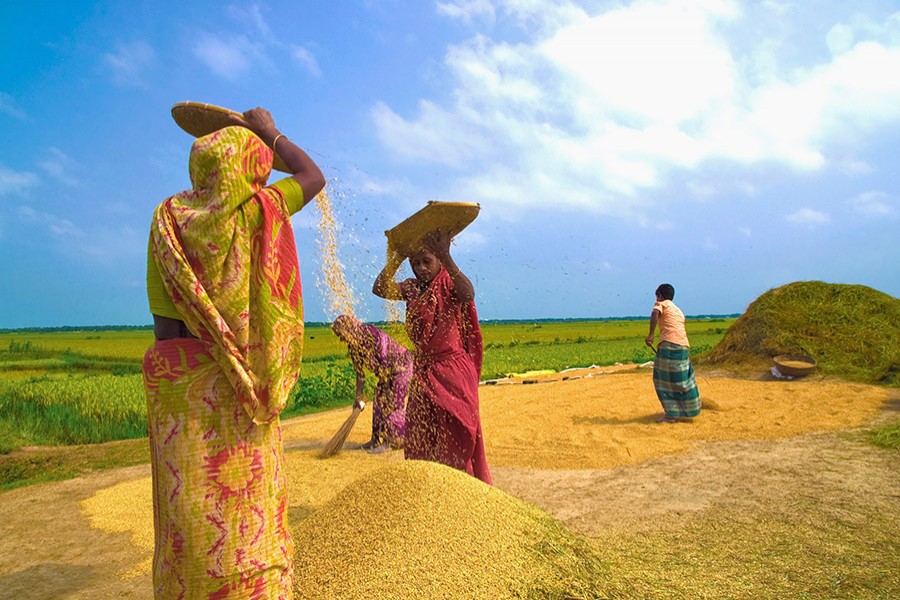As this writer opened his PC to start the present 'Opinion' in the late afternoon last Wednesday, normally the time would be pleasant. But a bout of heavy downpour outside brought in a spell of humid coolness. The rain that afternoon and those in the previous evenings smacked of something erratic. Nature has started behaving in a weird manner in Bangladesh for decades. Since the time was the pre-winter Hemonto (one of the two Bangla autumns --- the other being the king of seasons Basanta or spring), it used to fill the body and mind with a pleasant feeling. Spring has long been elusive in this lately hot and humid city. By nature fully tropical, Dhaka has bidden farewell to the physical charm it would enjoy during Basanta. Though interchangeable with the early winter, Hemonto in years still retains the faint leftovers of monsoon that battered the country not long ago. However, the association of the rainy season with Hemonto is now a thing of the past mostly.
During the short-lived Hemonto, in the villages, one used to find post-harvest paddy fields in the past. A typical aroma coming from a mixture of fog-soaked harvested and barren field and that of scattered paddy seeds would transport one to a surreal world.
In many Bengal villages, people would be found moving along the village paths, wrapped in cotton 'chadars', as the evening breeze would just start turning into chilly winds. The celebrated Bengalee poet Jibanananda Das was compulsively in love with the rural Hemonto evenings. He wrote several poems celebrating the pre-winter Bangla season of autumn. In the early times, the arrival of Hemonto used to be enjoyed by the people living in the big cities as well. Although there were no crop fields, the air, and the whole atmosphere in general, would remain pollution-free. There were few hindrances to enjoying the autumnal ambience. There is no Hemonto in the West. The season is fleetingly experienced nowadays in some South Asian countries including Bangladesh. Unlike in Europe and the Americas, the southern part of Asia once took pride in its six seasons. Apart from summer, monsoon and winter, vast swathes of this region took pride in its two short-duration seasons --- the post-monsoon and pre-winter seasons. In the season-centred turbulence, linked nowadays to global warming and climate change, the seasonal varieties have made many regions vulnerable.
Country after country are ravaged by abnormally prolonged winter, featuring heavy snowfall and blizzards. Springs just pass by them. The luckier ones find themselves amid a spring hurrying to coalesce into a newer spell of summer.
On the other hand, semi-droughts caused by scorching seasons of summer also feature vast regions. These natural abnormalities are commonly accompanied by wildfires, volcanic eruptions, etc in regions of varied climates. The swathes range from Spain to the US. In the year of 2021, volcanologists have detected 70 eruptions at some point in the year from 69 volcanoes. Twenty-two of these eruptions are new becoming active from this year. On the other hand, a few volcanoes started erupting 50 long years after eruption in 1971. Global warming impacts are not so much linked to volcanic eruptions as they are to protracted wildfires.
These wildfire calamities have been raging through the vast tracts in the western US, the largest one among them being the California state with 6,224 incidents. Canada has had its own share, no less alarming, of these destructive fires. On the other hand, Australia has been grappling with devastating bushfires since 2019, its most affected area being the vast country's southeastern zone. Wildfires continue to release millions of tonnes of carbon dioxide into the air, prompting atmospheric turbulence. The seasonal cycles of poorer countries have just to bear the brunt in silence.


